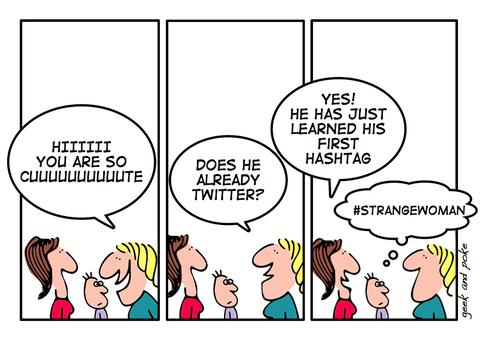 Hashtags are everywhere. Some 24% of tweets contain hashtags. Some 71% of people on social media use hashtags. Even Facebook recently instituted the lowly pound mark that has become a strong marketing tool. But here’s the thing? Do you know when to hashtag and not to hashtag?
Hashtags are everywhere. Some 24% of tweets contain hashtags. Some 71% of people on social media use hashtags. Even Facebook recently instituted the lowly pound mark that has become a strong marketing tool. But here’s the thing? Do you know when to hashtag and not to hashtag?
Hashtags were created in 2007 by Chris Messina, as a way to monitor interests on Twitter. Internationally, the hashtag went mainstream on Twitter during the 2009–2010 Iranian election protests, as both English and Persian-language hashtags became useful for Twitter users following the events.
Here are our top six things to know about hashtags.
1. What is a hashtag? Hashtags are like keywords- preceded by the hash or pound symbol – that allow content to be organized on a social network. Twitter created hashtags and now they are found on many social channels like Google+, Tumblr, Pinterest, Instagram and now Facebook. Hashtags facilitate searching for topics by grouping all like hashtag content together. Simply put, if you Tweet with a hashtag on a public account, anyone who does a search for that hashtag may find your Tweet.
2. Who creates hashtags? Here’s the beauty of it – you do! Events sponsors, groups and organizations will often suggest hashtags for their meetings to encourage communication among attendees and followers. To create a hashtag, simply include a # in front of a word or phrase. Celebrities use them to create more attention for their songs like Lady Gaga using #IWasBornThisWay. Disasters alert us with hashtags like #OKTornado. If you want to incorporate your hashtag across multiple channels, you need to consider the character restrictions of those social networks. If you’re creating a hashtag for an event with a long title like National Small Business Week 2013, consider using an abbreviation or acronym, #SBW13. It might be a good idea to do a search on a hashtag you are considering. A quick search might save you some time or embarrassment if there is a negative use of a hashtag.
3. What are typical uses of hashtags? Hashtags allow you to be part of larger conversation. Some of the most frequent uses are:
To identify an event or place – #Oscars, #American Idol, #CapitolGrille, #Nashville, #NBAFinals
To make an event social – #M2Moms, #SXSW, #NAMA
To express emotion or opinion – #Cher rocks it on The Voice, #surprised at Downtown Abbey finale
To make a recommendation – #MustRead, #MustWatch, #NowPlaying
To connect with others – #DachshundLovers, #CatLovers, #KidsBikeSafety
4. How many hashtags should you use? Well, research says that has shown that engagement drops when a tweet has two or more hashtags. On the flip side, tweets that have hashtags received two times more engagement than those without hashtags.
5. Is there hashtag etiquette or rules? No, but there are some best practices like don’t use more than two hashtags per post. When you are selecting your hashtag, make sure the phrase is used without spaces – like #MustRead. Your Mama would say don’t use profanity in your hashtags. You can put a hashtag anywhere in your post. On Facebook, your privacy will remain intact. Only your followers will see your hashtag.
6. What are implications for marketing and branding? It is becoming common to see hashtags as part of a marketing campaign. A good example is GE. GE’s recent TV commercials have included the hashtag #brilliantmachines. The hashtag represents the whole General Electric line of products whether they are talking about healthcare or engines. Using #brilliantmachines in their TV spots also reflects the symbiotic relationship between television and mobile – with between 75% and 85% of TV viewers use other devices while watching. If they see a hashtag on TV, it’s easy to look it up. Television shows are using it to advantage. But, again, it is important to monitor campaigns to see that they don’t take on a different life than intended. McDonald’s #McDStories turned into horror stories about fast food nightmares.

